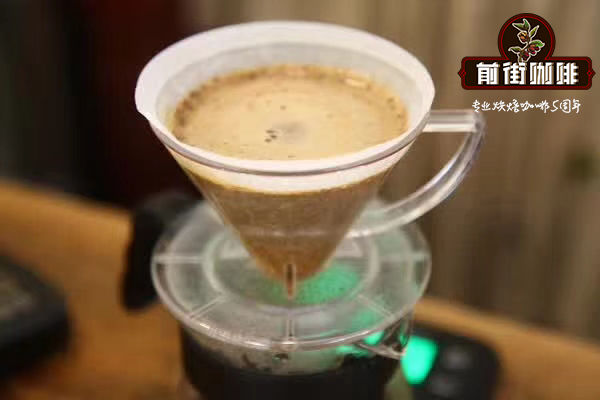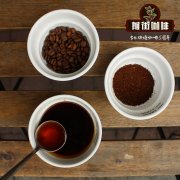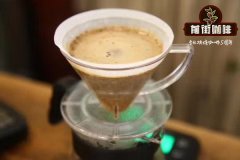How does the bean temperature change during coffee roasting? The function of the throttle
There are two main ways to describe how the bean temperature changes during baking: the bean temperature curve and the rising rate. The bean temperature curve is used to determine the actual temperature of beans. It looks a bit like a check mark.
RoR, however, measures the rate at which the temperature of coffee beans rises. This is measured over a specific period of time, usually between 30 and 60 seconds. For example, you can choose a 30-second phase, and it is recommended that you choose a well-controlled stage. If you have an ROR of 5 in 30 seconds, it means that the temperature of your beans will increase by 5 degrees every 30 seconds.
ROR curve in the chart, compared with the bean temperature curve, will show a very different linetype. At the beginning of baking (dehydration period), the air temperature will show a negative growth rate, but the furnace temperature and bean temperature will eventually neutralize, which is what we call the temperature recovery point. From here on, your ROR will begin to show an upward trend.
So, why measure RoR? Because RoR can alert you to the rising trend and pattern of temperature in advance, you can more boldly manipulate and modify the parameters of baking according to this curve, and help you show the flavor you want through these adjustments.
A high ROR value indicates that the baking process is progressing faster; low means that it is progressing slowly.
Don't let your ROR fall too low, because you may reach the stall point. Stall roasting will occur when the ROR value is extremely low, that is to say, it may be 0 or negative, and the machine does not recover, and the temperature will remain the same, so that the coffee will only have roasted aroma and nothing else. It will also reduce the sweetness of coffee beans, resulting in a flat flavor of coffee beans. In this case, it is impossible to stimulate the compounds in coffee beans that can shape the flavor of coffee.
In the process of baking, the baker's goal is to accurately control the development of the RoR value. In the process of learning, you will find that when you are baking, you can make your coffee highlight a different flavor. For example, high RoR values, especially in the early stages of roasting, highlight the acidity of coffee.
The use of the throttle is to control the air flow and velocity in the boiler.
It is generally achieved by adjusting the opening of a baffle at a certain position of the smoke pipe installed in front of the exhaust fan of the roaster, or some roasters are achieved by adjusting the speed of the exhaust fan.
The size of the throttle will affect the effect of hot air in the boiler on the heating of coffee beans. Under the premise of sufficient heat, slightly increasing the throttle can enhance the effect of hot air on coffee beans, but if the heat is not enough or the throttle is too large, the boiler will lose temperature. Opening the throttle when necessary can more quickly remove the silver skins and particles that make the coffee smell. The size of the throttle will also affect the pressure of the boiler and the development of coffee beans.

Important Notice :
前街咖啡 FrontStreet Coffee has moved to new addredd:
FrontStreet Coffee Address: 315,Donghua East Road,GuangZhou
Tel:020 38364473
- Prev

Coffee growing Coffee Leaf Rust Coffee Industry challenges Coffee Culture
Professional Coffee knowledge Exchange more information on coffee beans Please follow the Coffee Workshop (official Wechat account cafe_style) Coffee farmer Mario Kortho (Mario Mendoza Corleto) patrolled the coffee plantation on the hillside in late summer 2012 in Santa Ana, the second largest city in El Salvador, Central America. Suddenly, he noticed an anomaly: among them
- Next

What are the characteristics of the varieties of coffee in Colombia?
In addition to the common coffee varieties in America, such as Caturra, Bourbon, Iron Pickup Typica and Parker Mara, Colombia also has its own three disease-resistant varieties, namely Castillo, Tabi and Colombia varieties with the same name as the country; of course, there are also some rare and precious varieties such as Gesha, Mocha Mocca with small particles,
Related
- Beginners will see the "Coffee pull flower" guide!
- What is the difference between ice blog purified milk and ordinary milk coffee?
- Why is the Philippines the largest producer of crops in Liberia?
- For coffee extraction, should the fine powder be retained?
- How does extracted espresso fill pressed powder? How much strength does it take to press the powder?
- How to make jasmine cold extract coffee? Is the jasmine + latte good?
- Will this little toy really make the coffee taste better? How does Lily Drip affect coffee extraction?
- Will the action of slapping the filter cup also affect coffee extraction?
- What's the difference between powder-to-water ratio and powder-to-liquid ratio?
- What is the Ethiopian local species? What does it have to do with Heirloom native species?

